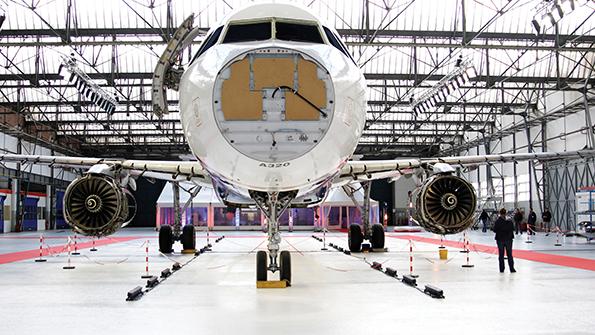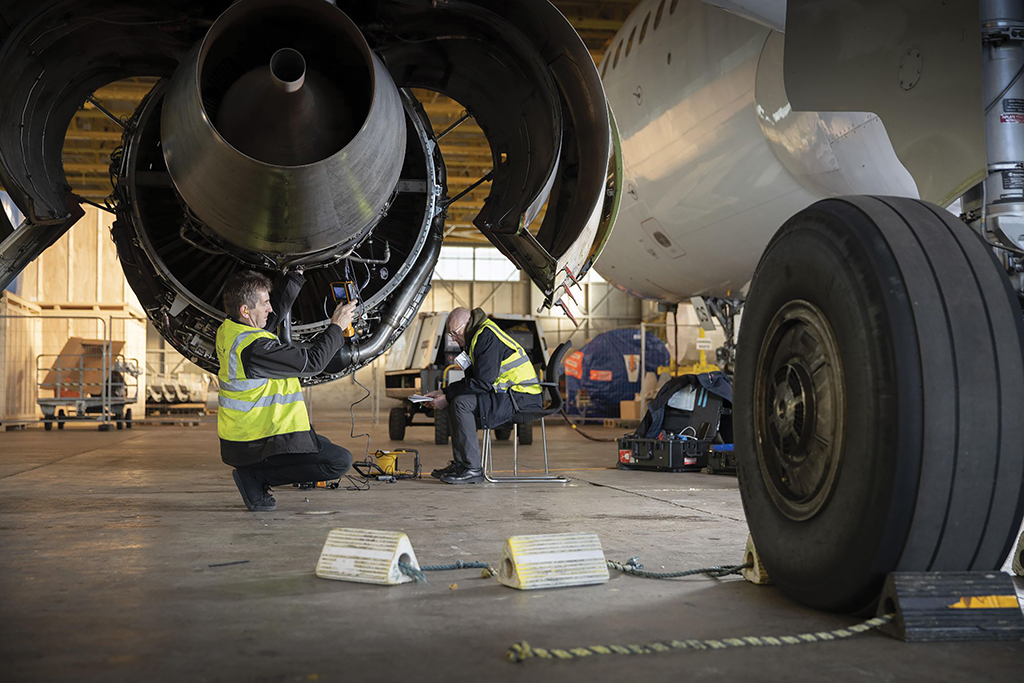
Vallair has capacity for up to 12 narrowbody aircraft teardowns annually.
A predicted retirement surge as cash-conscious operators retire aircraft in the wake of COVID-19 has proved somewhat premature. While much of the global fleet was parked or in storage during 2020 and into 2021 before being reactivated gradually in the second half of 2021, some operators opted to extend the life of their mature aircraft. As new-generation aircraft types have entered service, the aircraft they replaced have found new operators, with lessors reporting booms in green-time demand from carriers looking to eke out a few more years of an asset’s life cycle.
Perhaps the biggest losers from the lack of retirements and subsequent teardowns are airlines and MROs, both of which are looking to increase parts stock—particularly used serviceable material (USM)—to be fed back into the market for parts sourcing to ease availability. Constraints in the aftermarket supply chain, a lingering impact of the pandemic driven by factors such as extended turnaround times and labor shortages, have added a further headache for these players, with OEMs revising previous production targets as they struggle to keep up with demand.
SLOW AIRFRAME SECTOR GROWTH
Steven Taylor, chief commercial officer of UK-based aircraft disassembly and part-out specialist Ecube, describes the current state of the market as “generally positive, albeit complex.” On the one hand, the number of teardowns performed so far this year is increasing. “Lessors are bringing more aircraft back from airlines than in 2022, and the parts buyers are increasing activity, so disassembly numbers are rising, undoubtedly,” he says. However, Taylor says aircraft that normally would be prime targets for the parts companies often are being bought by lessors trying to supply alternate lift for customers waiting for new aircraft deliveries delayed by the OEMs. “This means our transitions teams are busier this year as well,” he adds.

Taylor is seeing the bulk of current demand in the narrowbody market, comprised of Airbus A320-family and Boeing 737NG aircraft types. Typically, Ecube works on a schedule of disassembling a narrowbody aircraft in four weeks and a widebody in six weeks at its facilities in St. Athan, Wales; Castellon, Spain; and Coolidge, Arizona.
Parts stock for narrowbody aircraft is in high demand due to the fast pace of the global airline recovery last year, says Kevin Ferreiro, director of business development at U.S.-based VAS Aero Services, which has managed more than 1,000 airframes and engine assets through its end-of-life programs. “Since operators and maintenance providers concentrated early in the pandemic on reducing inventory holding costs and limiting provisioning, the fleet recovery is driving huge requirements for USM products to maintain fleets,” he says.
Ferreiro attributes this to several factors. “The combination of labor and capacity shortages at teardown and repair vendors, along with global supply chain issues, has resulted in significantly longer lead times for the availability of USM to match up with the strong demand for USM options,” he says. Like Ecube, VAS is targeting A320 and 737NG aircraft for part-out, while in the widebody segment it has created tailored end-of-life programs for fleets such as the Airbus A330 and A380.
The market appetite also is increasing for the Boeing 777-300ER, an already established part-out option. Among the companies in this segment is UK-based AerFin, which at the height of the pandemic, in March 2021, elected to go down the teardown route on a 777-300ER for the first time with partner Tarmac Aerosave. John White, the company’s vice president for commercial, says the move was made to avoid costly transitions while benefiting from the premium parts pricing that arose from being the first torn-down aircraft. “The 777-300ER continued to fly through COVID, so there was strong demand for these components,” he says. “The production delays on new aircraft give us confidence that there will continue to be strong demand for material from the 777, and in particular the 777-300ER.”
Considerations about new-generation aircraft types are being factored in to possible teardown strategies, too. In March, Ireland-based EirTrade Aviation, which focuses on end-of-life services by disassembling both airframes and engines, acquired its first-ever Boeing 787 for teardown. As of May, the teardowns were ongoing at Prestwick International Airport near Glasgow in Scotland, with the disassembly process expected to take around three months.
Paul Gleeson, vice president of sales at EirTrade Aviation, says he was not surprised that such a relatively young, new-generation aircraft type became available to a teardown specialist like EirTrade. “Given the current supply chain problems and MRO constraints across the industry, I think it was only a matter of time before someone got their hands on 787s for disassembly,” he says. Despite the USM market for the program being in its infancy, there is an appetite for USM to help ease 787 supply chain issues, he adds.
Rather than dealing with extended lead times and supply chain disruptions, some companies have benefited from volatility over the past 18 months. Armando Filho, director of material management at Vallair, says uncertainty related to the global supply chain has helped it with trading and leasing and material management, enabling it to process more deals. “Our MRO facilities and repair shops are not immune to delays from external MROs related to lead times, spares availability and manpower, but the company is performing well and building growth around 20% year on year,” he says.
Vallair offers teardown and recycling services from its base in Chateauroux, France, in addition to its core functions of maintenance and component supply. Typically, it conducts three or four aircraft teardowns annually on A320-family and A330 aircraft.
ENGINE OUTLOOK
Powerplants, which generate high values, typically are the most sought-after asset taken off an aircraft. Specific engine types are particularly popular for disassembly, especially midlife engines in the widebody segment, while types such as the PW4000 also have seen a spike because the aircraft they power are looked for in the cargo segment. Demand in the narrowbody engine space centers on specific models of the CFM56 and International Aero Engines V2500 engine families.
“There is an increased demand for engine disassembly, particularly in the past 12 months,” says Mike Walsh, president of U.S.-based engine specialist BP Aero, which both repairs and conducts teardowns on engines through its BP Aero Engine Services business. “We are also seeing some new customers enter into this market space, as some people have moved companies after layoffs during COVID,” Walsh adds. He says the Texas-headquartered company is seeing demand for parts from all modules of an engine. Such demand is driving airframe specialists like Vallair, too, which plans to expand its capabilities into the engine teardown segment.
The current state of the global supply chain has played a role in driving engine teardowns as well. “Demand has increased due to the increase in worldwide shop visits and also due to delays in the supply chain specifically related to delays in OEM new part delivery and MROs reaching capacity and long lead times at the MROs,” Walsh says. “We are seeing an increased number of requests for parts to be drop-shipped directly out of the teardowns, as parts companies know that they may have to wait longer to have parts inducted and overhauled. Customers are also sending more parts out for repair than previously, when there were fewer constraints on the supply chain.”
“Our customers are seeing high demand for the CFM56-5B and -7B right now and an improving demand profile for the V2500-A5,” Ecube’s Taylor says. “Auxiliary power units, landing gears and all aspects of avionics equipment are in high demand, but increasingly, so, too, are fewer valuable items like ducting and piping—a demand driven by the increase in passenger traffic and lower volumes of disassemblies as a parts source for the aftermarket.”
Taylor expects the teardown market to be ascendant over the next five years. “Global demand for air travel is back, the flying fleet is aging, there is an appetite for newer and greener aircraft, the MRO sector is booming, and the OEMs are struggling to keep up. These factors make for a rising disassembly market,” Taylor says. Meanwhile, Ferreiro at VAS anticipates that as OEMs gain control over flagging production rates, the teardown segment will become healthier.
“As aircraft manufacturers recover to producing and delivering higher volumes of new aircraft to airlines and lessors, the volume of retirement aircraft for teardown will significantly grow and build a robust USM supply,” he says.
